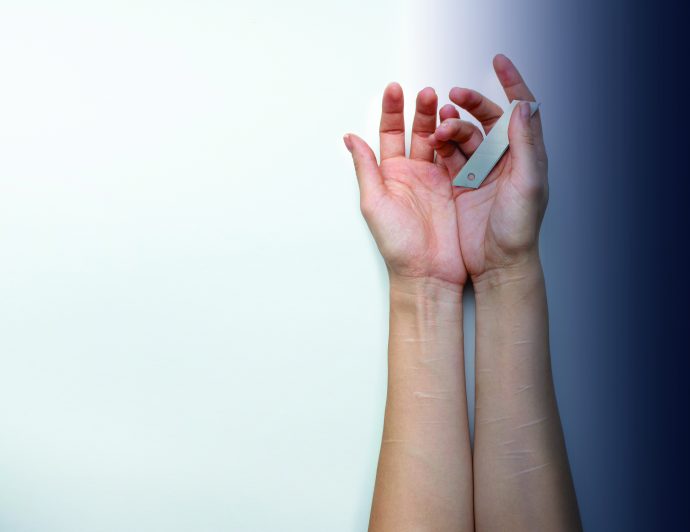Tina’s mother was worried. Tina* had not come out of her room for the last 5 hours and missed her dinner. At 9 pm, her best friend rang to say that Tina had posted a picture of herself with cuts on her wrist on her social media profile.
*Name for illustration purposes only and does not refer to any specific individual
What is self-harm?
Self-harm refers to acts which individuals carry out with the intention of harming themselves. Self-harming is more common in teenagers and young adults. Usually, girls are more prone to self-harming behavior than boys.
Examples of self-harming behaviour
- Overdosing on medication
- Self-poisoning
- Self-cutting
- Self-hitting
Why do some teenagers self harm?
A number of teenagers who self-harm do so on an impulse. These are actions carried out at the spur of the moment, without any intention to commit suicide. They may be seeking relief from the build-up of tension, as a way to distract themselves or escape from painful feelings. Some may find themselves overwhelmed by strong emotions during a stressful situation and feel that they cannot find an alternative.
For some teenagers, inflicting cuts that are visible may be an expression of deep emotional wounds and scars which they feel inside. Others may be driven by strong feelings of rage towards others, or even towards themselves. Some teens may try to influence someone else through self-harming behaviour.
We should be especially concerned and vigilant if we observe any of the following:
- A person becomes withdrawn and repeatedly speaks about wanting to end life.
- Dangerous methods of self-harm are chosen.
- A person takes elaborate steps to avoid being discovered.
A small proportion of individuals who self-harm may have the intention to commit suicide.
Factors which make some teenagers more prone to self-harming behaviour
Personal & psychological issues:
- Experiences of physical, emotional or sexual abuse.
- Victim of bullying.
- Depression.
- Feeling hopeless or worthless.
- High levels of anxiety.
- Prone to impulsive behavior.
- Poor problem-solving skills.
- Difficulty making decisions.
- Consumption of illegal drugs or alcohol.
Family & social issues:
- Parental divorce or separation.
- Conflict and violence within the family.
- Living in poverty.
- Difficulty adjusting to a new environment, e.g. moving to a new city.
- Social isolation and lack of supportive friends.
- Quarrels with friends.
Situational factors:
- Break-up with boyfriend/girlfriend.
- Exposure to friends who have self-harmed.
- Exposure to self-harming on social media.
Warning signs
Some actions may be visible to others. A teen may attempt self-harm during an argument, or upload posts about their actions on social media. Others may retreat behind locked doors and hurt themselves in secret.
Look out for signs of self-cutting: unexplained wounds on the forearms or wrists, wearing long sleeves to cover wounds, blood-stains on clothes, bed linen or blood-stained tissues in the trash and keeping sharp objects such as razors or knives.
What can parents do?
Never dismiss or ignore the problem. Avoid scolding or making hurtful remarks. Self-harming is a signal that a teenager is having difficulty coping and in need of help.
Try to understand. Are there any personal or family issues which could make your child more prone to self-harming behaviour? Has there been any recent incident, such as a disagreement with a family member? Are there difficulties at school? (refer to the Table above) Remember that there sometimes multiple factors which lead to self-harm, and the specific reasons may be different for each person.
Listen to your child. Have you been too busy to have daily conversations with your child? Teenagers may keep problems to themselves when they feel no one is listening. Some problems can be difficult to reveal, such as bullying or sexual abuse. Set aside time to explore what is troubling him or her. Reassure your child that you are there to help.
Seek professional help. Ensure that your child receives medical attention to check for any serious injury or harm. It is equally important for doctors to identify any psychological problem that requires treatment such as depression and to assess the risk for repeat incidents. A psychologist or counsellor could teach your child techniques to reduce anxiety, calm their emotions and relieve stress. They could help them to build coping skills such as how to tackle problems or communicate with others. They could also advise parents on appropriate ways to communicate with and support their child.
An educational contribution by Malaysian Paediatric Association.








Comments